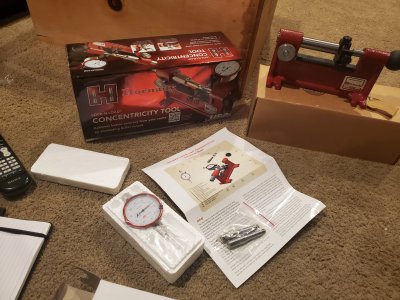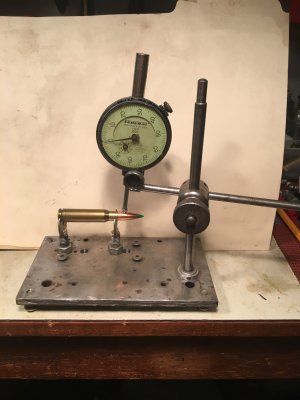- Joined
- Dec 6, 2015
- Messages
- 829
A colleague of mine had a few concentricity tools, and he sent me one. It was unopened, new-in-box shape. It's a Hornady tool. The frame was aluminum. I started to play around with it, but my machinist brain is immediately questioning the tool. As I see it, it takes the bullet in one spindle, and the case butt in the other. The dial indicator (sits on a Picatinny rail without the slots as a cheap form of a dovetail) looks to be a cheap, re-badged harbor-freight dial indicator.

Based on the dial indicator only registering on the shoulder of the casing, it will have some limitations. For example, the "runout" of the bullet isn't being directly measured, and the "out of round" on the casing will only show part of how far the bullet is out. It seems like it will be misleading, and you can't tell if it's seating concentrically on a different axis that is angled from the casing, or if it's a different but parallel axis. Do most concentricity tools function this way? My brain says a tool for measuring this kind of thing would hold tight on the casing, and then measure the bullet directly.

Based on the dial indicator only registering on the shoulder of the casing, it will have some limitations. For example, the "runout" of the bullet isn't being directly measured, and the "out of round" on the casing will only show part of how far the bullet is out. It seems like it will be misleading, and you can't tell if it's seating concentrically on a different axis that is angled from the casing, or if it's a different but parallel axis. Do most concentricity tools function this way? My brain says a tool for measuring this kind of thing would hold tight on the casing, and then measure the bullet directly.

